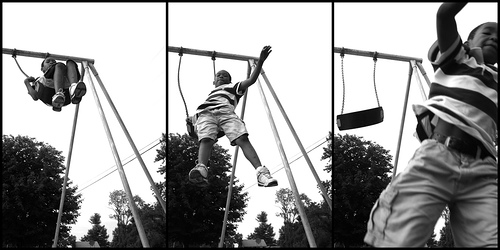What can pro cyclists teach us about pain?
“Next time you’re in a car going 50 mph, strip down to your underwear and jump out the door. That’s what it’s like to crash in professional bike racing.”
That was a promo for the 2008 Tour de France from Versus. I’m an avid cycling fan and lately I’ve been tuning in to watch the grueling Giro d’Italia, where men on bikes careen down mountaintops at 50-60 mph. Only a thin layer of logo-splashed cloth separates them from the pavement.
If they misjudge the road by a fraction of an inch, they splatter. If they are able to peel themselves up off the pavement and stand up, they will get back on their bikes and keep going. With bleeding limbs and contorted faces, they climb the next gravity-defying peak. The next day, they get up and do it again.
The cyclists speak often of their pain. They speak of emptying their tank and turning themselves inside out. During interviews, they mutter phrases like “the more you suffer, the better you get at it” and “pain and suffering can be satisfying.”
As a health professional, many individuals have shared their stories of pain and suffering with me. This pain is revealed in quite a different voice than that of the cyclists. This pain is most often uninvited, unwelcome and misunderstood.
To truly excel at their day job, the cyclists must learn to embrace their pain, understand what it is telling them about the limits of their body, and use it to drive them forward over a finish line.
I wonder what these men — and other top athletes — can teach us about pain. How do they visualize it? Do they give it a name? A color? Do they play games with it and taunt it? What can we learn from them?
(The song in the video is “Hurt” performed by Johnny Cash. It was written by singer-songwriter Trent Reznor and first released on Nine Inch Nails’ 1994 album The Downward Spiral.)










I love the song! It really gave the video power. I watched it and wanted to get on my bike and feel the pain of a long climb. Pain is a way to test my strength. The stronger I get the longer I can hold it off.
[…] posts Are humans designed to be endurance runners? What can pro cyclists teach us about pain? 100+ Top Play Resources Share and […]
[…] What can pro cyclists teach us about pain? […]
[…] What can pro cyclists teach us about pain? […]
[…] the door. That’s what it’s like to crash in professional bike racing.” A great post about pain in professional athletes. […]